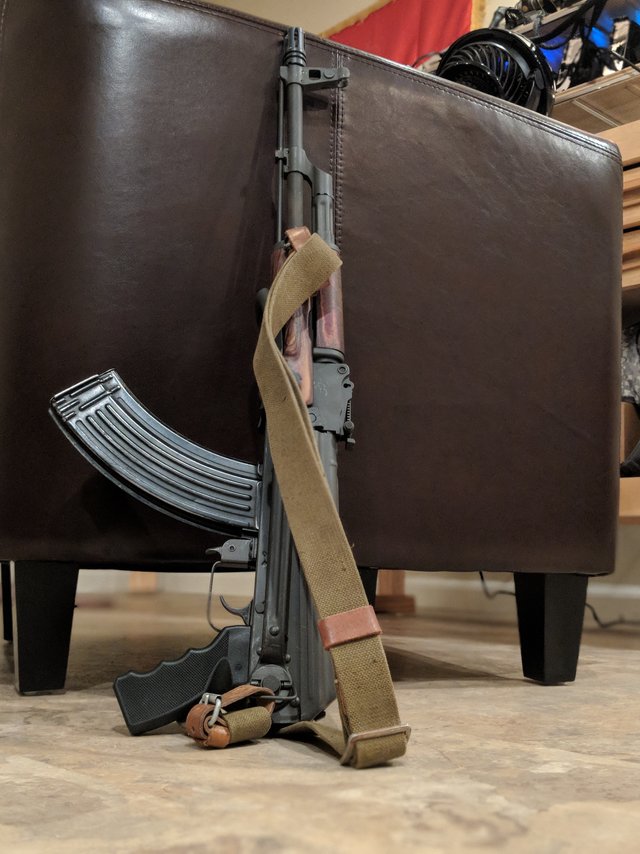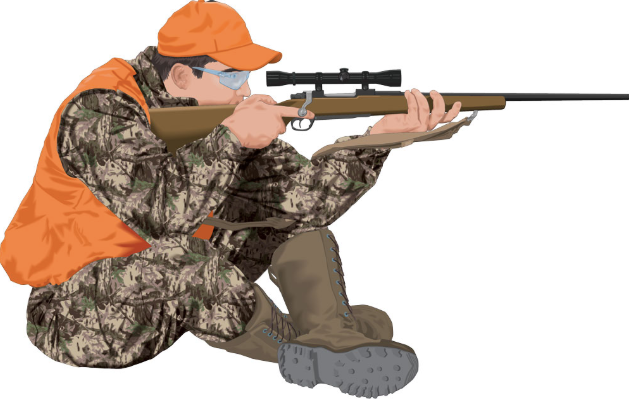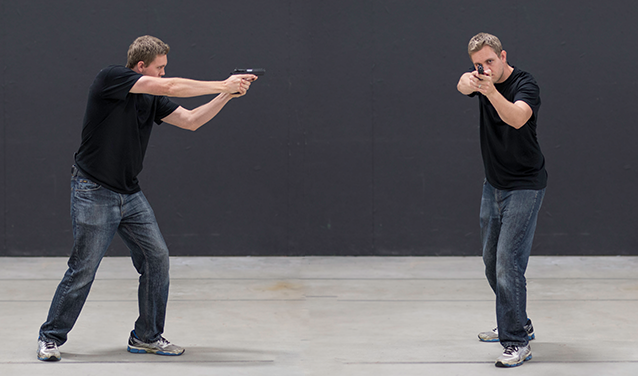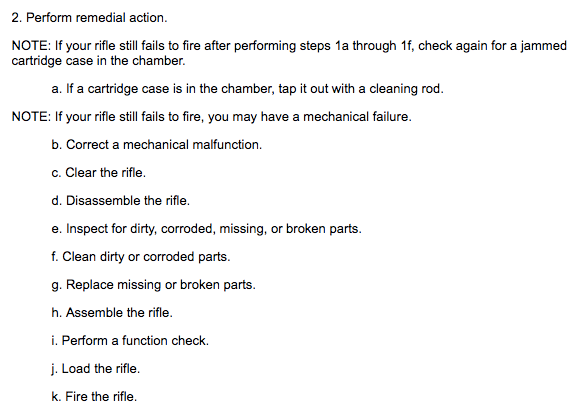Welcome back once again to the third part in the five-part series, Thoughts of an Experienced Gun Owner. If you have not already, check out parts 1 and 2:
A Vonuan Guide to Firearms Part I: Selection
In part 1, I went off on a rant about police violence and brutality and how the bludgies are not going to protect you. It is up to you to and it is your right to defend yourself. Also, I recommended some common firearms models and what specific purpose they might be used for as well as specs.
A Vonuan Guide to Firearms Part II: Build or Buy?
In part 2, another rant about legal bullshit and how the decrees and magic papers handed down from the rulers differ in specific geographic regions. I also did some research for you (and for my own self-interest) on some places you can purchase gun parts with cryptocurrency. I briefly covered how one might mill or 3D print his/her own lower receiver. Lastly, I covered some recommended online websites where you could purchase gun parts and ammo.

Now, let’s get into Part 3 – Basic Safety Rules, Firing & Maintenance. The reader may vary in levels of firearms experience, but regardless, a great level of care and responsibility must be taken when handling firearms. The most basic and most important general universal rules when handling firearms. These rules are self-explanatory:
Rule 1: Treat every weapon as if it were loaded
Rule 2: Keep your finger straight and off the trigger until you are ready to fire
Rule 3: Never point a weapon at anything you don’t intend to shoot
Rule 4: Keep your weapon on safe until you intend to fire

I’ve always been taught from an early age to respect firearms and to handle them with care. Since these rules are so universally basic, let’s cover a few things NOT to do. If your friends do not know these rules you should make them perfectly clear. Hell, you might end up saving their life by preventing an act of carelessness. Plus, do you really want to give the “unbiased” media more coverage of people handling firearms incorrectly? We know that FBI agents can’t handle firearms, especially while dancing. Really stupid, and should have never happened if he had only followed the above basic rules (refer to the below video). The media and statist citizens will give this agent of the State a pass. The guy that got shot even said it was okay, that’s some Stockholm Syndrome right there. But, you as a normal citizen are not afforded the same leniency as the enforcers of the ruling class.
So, just by following these rules and treating weapons with respect, you can prevent accidents that may have been prevented if one were handling firearms in a responsible manner. Maybe you have an experienced friend that has been handling guns since he or she was little. Ask them what the proper way is for handling particular rifles and/or handguns. You can always ask an instructor at a local range or gun club to show you. If they act like douches to you because you asked questions about basic firearms safety, they don’t deserve your business and you should find somewhere else to shoot and practice.
I hope I don’t sound like a jerk, but the rules above are really important and it’s no joke.
Firing positions
So now we’ve got the basic rules down, let’s cover some basic shooting positions and some basic tips for firing.

When you are getting ready to fire or laying in a position, you’ll need to make a decision about what type of stance you’ll take. Where possible with a rifle, my preferred position is going to be prone, because it’s the most stable. That being said, it’s going to all depend on the situation. When someone breaks into your home and you need to easily maneuver, you can’t just drop to the floor into a prone position. However, taking a prone position on the top of a vantage point, like a hill (with proper cover) can give you the accuracy and stability you need to fire and make a shot at a long distance.
To get into the prone position, simply lay down on the ground while keeping your rifle pointed in a safe direction. Once you are laying down, position the rifle to where you are comfortable, elbows on the ground, right hand (if right-handed) controlling trigger and loading and unloading and left hand placed on grip, sort of pushing the rifle back into your shoulder to keep it stable. Some might even prefer using a loop sling while in prone, which you can purchase on Amazon or any gun or sporting goods store (but don’t go to Dick’s since they are, well, Dicks). Anything that you can really use to help increase your stability is preferred. For example, if there is a flat rock nearby or log you can use to prop your rifle on while still maintaining a clear view of the target, go for it.
Another handy addition are bi-pods. Depending on your rifle setup, if you have an AR-15 with an MLOC or Key Mod free float rail system, these can easily be added and taken off when not in use. Lastly, you’ll want to lay in the prone whatever way is most comfortable for you. If a shooting book says, keep your legs together, and you are more comfortable and more stable by keeping your legs apart and firmly positioned on the ground, then, by all means, go for it.

Kneeling and Sitting
I would argue that sitting is going to give you more stability vs. kneeling. If you are a small person or are very flexible and can go into an “Indian style” type position, where your elbows rest on the inner sides of your knees, this would be ideal. But, most people including me now that I’ve gotten older, can no longer put themselves into a pretzel, and that’s okay. An alternative sitting position involves separating your legs, still using the inner side of your knees as support for your elbows, but with your legs apart.


The sitting position will give you a pretty stable position for firing, giving you a little less stability than the prone position. The advantage of a sitting position (or kneeling) is that you can easily maneuver in and out of it. You could take a couple of shots on the move, but sitting is going to take you longer than say, kneeling, to get out of, especially if you are down in the yoga pretzel “Indian style” position. Although it’s stable, this is not going to be ideal if you are being chased after or need to quickly defend yourself from a threat. One other advantage is once you’ve gotten into a sitting (or kneeling) position, it will be pretty accurate for firing at targets at long distances or for a longer time. You could also conceal yourself a bit more and get cover among trees and rocks, depending on your environment.
Standing
The standing position is by far the least stable shooting position. But, what you sacrifice accuracy, you make up with in speed and the ability to move quickly. I would say most of the time, in a life-threatening situation you are not going to have time to get yourself down into a prone or sitting and then take shots, you’re gonna fire from the standing. An example might be a home invasion, where an intruder breaks into your house and not only wants to steal your personal property but is intent on harming you and your family. The situation is at a close distance and you need to move quickly, so standing wins every time. When you are in a standing position out in the open, such as maybe a long distance outdoor shooting range, you are gonna want to do anything you can to try and improve your stability. Whether it be using a pistol grip mod on an AR-15, a pair of shooting gloves, a shooting jacket, a loop sling, or using the environment around you such as leaning against a tree or something. Increasing stability where possible in a shooting position can drastically improve accuracy.
In a life-threatening situation as described, you might want to learn to maintain a stance in uncomfortable situations such as without any mods, gloves, or jackets (like in your pajamas) and see how it feels. Try a practice run a few times (without a magazine inserted) in your house, maybe while your neighbors aren’t home or are not snooping in your windows!

Handgun positions
I have never really utilized any other position when firing a handgun than standing, kneeling, and maybe sitting from a chair. Firing a handgun from the prone is not going to help you, since handguns are not accurate at long distances. It is assumed that you are using a handgun for speed and ease of maneuverability. So let’s say you are in an urban environment, say a house. Again, you’ll want to be stable with your feet, by keeping them relatively farther apart. When you draw your weapon from a holster, you bring it up with your right hand (or left if left handed) you immediately are in the position to fire. Using your right hand as your dominant hand to control trigger, keep this arm straight (but not so straight that you are locking your right arm into place) and then firmly use your left hand to maintain stability as you’re firing. I prefer the tactical stance as illustrated below, but you can also square off straight with your target. These are just suggested positions, you’re not going to get ragged on if you find a position that’s more stable for you and where you can make more accurate shots. And, if some douche says something to you, so what. Don’t tell me what to do!

Also, your grip is going to make a huge difference as well. I’ve always used the fist grip, which helps control the recoil a bit more than say if you were trying to shoot with one hand. Again, you’re not going to be hitting targets at 200 yards with a handgun, it’s best used in up close situations where you need to react and move quickly. My advice would be, try some of the grips that are most uncomfortable such as shooting with one hand and see if you can do it, or try shooting while sitting down in a chair. If you are able to get to an outdoor range or use someone’s back yard, try shooting while moving. It’s kind of awkward at first, but being comfortable while doing it might save your life where you only have seconds to react.

There are so many other tips on positions, grips, sight alignment sight picture, and trigger control. There are manuals out there that are hundreds of pages describing these techniques, but there is no substitute for just getting out there and experiencing it on your own or with someone that might be able to teach you first hand. I would recommend once you’ve been out a few times to look at sight picture and trigger control techniques because they are very useful as well. As I briefly mentioned in the first part, it would be better if you could try out a handgun, maybe shoot a friend’s or rent a couple different types at a gun store before you go out and drop $600-700 on a gun you’re not comfortable with or doesn’t fit well in your hands. I used to own a 1911 .45 short barreled officer pistol and it was just not comfortable and I didn’t like it. I ended up selling it and picking up a full sized 1911 Colt which I love. Had I tried it out to begin with I could have saved myself a whole lot of time, money, and hassle.
Basic Firearms Maintenance
At a close second to the firearms safety rules, keeping your weapon clean and functioning is really important. Not only because you are counting on this weapon to perform when you need it in the most dire of situations, but also because you paid a lot of money for it and want to maintain it, preventing problems in the future. Let’s use your car as an example. You take it in for maintenance or work on it on your own periodically. You keep it clean (not as clean as you’d like probably) and well functioning. It is easy to neglect these things, and usually what ends up happening is a break down on the side of the road or something bad happening when you do not want it to, and at the worst possible time. At the same time, if something like this does occur, you’re gonna want to know what to do to fix the problem, and fast.

First and foremost, always keep your weapon clean. This means after every time you shoot it, you need to break it down and clean each part, including swabbing the barrel with a good corrosive solution such as Hoppe’s gun cleaner. They sell these cheap cleaning kits almost everywhere at sporting goods stores, gun stores, and Amazon. You can get one for about $12. I also have a Frog Tube cleaning kit which has a bunch of cleaning stuff in there. They say the solution cleans while being a little less harmful on the cleaner (you), and if you have someone else living in your house they’re not going to be smelling gun oil and CLP for days on end.

If you’re on a budget, a hand full of Q-tips, some paper towels, a hand towel, and a toothbrush will also do the trick. You’ll need to learn how to disassemble and reassemble your firearm, which I’ll cover in the next part. But for the time being, if you haven’t cleaned your rifle since you bought it (you know who you are) maybe it’s time to take about a half an hour and knock the carbon off your weapon. I actually find it soothing. It’s not my favorite thing to do, but I do it every time I get home from the range.
The second most important thing is that you’ll want to make sure your weapon is well lubed, especially if you own an AR-15. Most of the kits you buy should have a bottle of lubricant, but if not you can purchase separately. Just throw it in your shooting bag in case you need it. After your weapon is clean, put a few drops (a little goes a long way) onto the moving parts (bolt, inside the chamber, charging handle, etc.). This will hopefully prevent jams and misfeeds.
What do I do if my Rifle gets Jammed?

If you are firing and all of a sudden you pull the trigger and nothing happens, what do you do? You can’t just freeze up and do nothing. You’ll need to take immediate action by following these steps. Maybe, I’ll just put a comment here about some frequent cleaning might have helped prevent this situation to begin with (just saying). These are meant for an M16 A-2 rifle, but in most cases, it can be universally applied to most rifles. Handguns are slightly different, but the goal is the same. Try to remove the obstruction as quickly as possible:

In my personal opinion and after speaking with a gunsmith, I think the forward assist is the shittiest part on an AR style rifle, it does nothing but jam the obstruction further up into the chamber, often times in my experience, making the problem even worse. That’s not to say that if you have one, you shouldn’t try it, go ahead, but I’ve never had a case where i’ve tapped the forward assist and it’s solved the problem for me.
Now say you’ve done all of this and you still have a jam and your rifle is not firing, you’ll need to take remedial action:

Usually, 9 times out of 10, performing some type of remedial action will most likely fix the problem. The most common problems are jamming and misfeeds where the rifle failed to eject a spent round or a piece of metal or spent brass was lodged inside the rifle. If it is happening to you consistently, it may be a larger problem. I was experiencing misfiring of rounds where I’d pull the trigger and the rifle did not fire. In each case the problem was solved with immediate action, however, it was happening consistently. So, I decided to purchase a drop-in trigger which completely solved the misfire problem altogether.

I hope you enjoyed part one of this 5 part series – Part 3 – Basic Safety Rules, Firing & Maintenance. I hope you will continue reading the later series which I plan to write soon. Stay tuned!
Five Part Series–
Part 1 – Selection COMPLETED
Part 2 – Build or Buy COMPLETED
Part 3 – Basic Safety Rules, Firing & Maintenance COMPLETED
Part 4 – Disassembly / reassembly of common firearms (1911, S&W M&P, AR-15, AK-47)
Part 5 – Wrap up and recap
Also, if you like what you are reading and it has benefited you in any way, please feel free to give a voluntary contribution of bitcoin to the following address:
1dG1vhLmevVqPUp7RdjuMkUqbTmPA2fVx

Check out Liberty Under Attack Publications for tools to aid you in your self-liberation, or if you’re an author looking for a liberty-focused publisher!




2 Replies to “A Vonuan Guide to Firearms Part III: Basic Safety Rules, Firing & Maintenance”